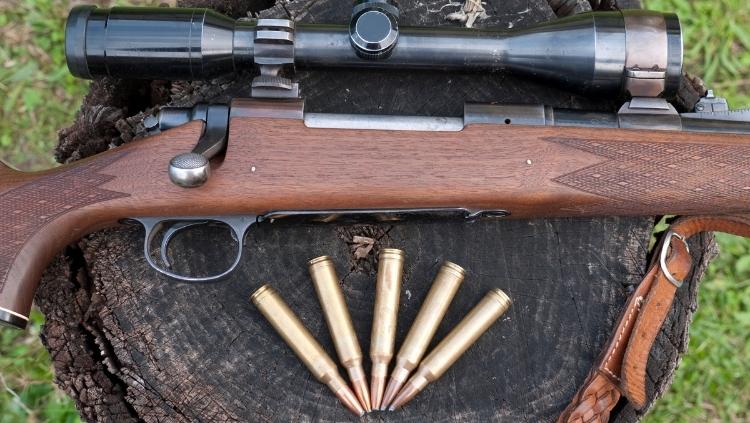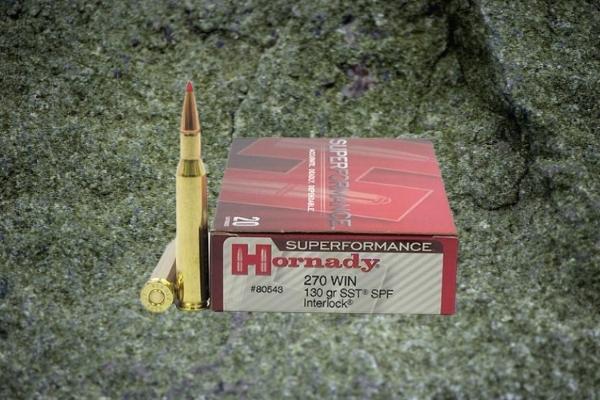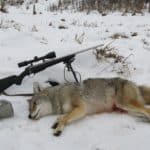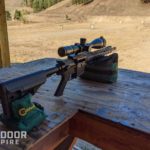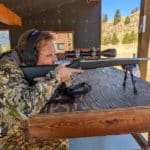My hunting friends love to rib each other about their favorite calibers.
A particularly sharp rivalry is between my love of 6.5mm caliber cartridges (such as 6.5 Grendel and .260 Remington) and my best friend’s focus on .308 Winchester, which is an excellent round in its own right.
If I had to pick just one cartridge to hunt almost any animal in North America, though?
I wouldn’t choose either .308 Win or my beloved 6.5 Grendel.
The best hunting rifle caliber for most hunters is the .270 Winchester. It’s powerful enough for elk and moose but can be tamed down for coyotes and Sitka deer. It’s also a popular enough hunting ammo to find it available for sale even at small outfitters.
What makes this cartridge so great?
Let’s delve into why the .270 is such a versatile caliber.
What’s Important in the Best Hunting Cartridge?
A good hunting round has the qualities necessary for you to harvest your chosen game reliably.
An excellent hunting caliber will allow you to hunt as many animals as possible.
This will let you stick to just one rifle for all of your hunting needs, saving you money and taking advantage of your familiarity with the weapon.
These qualities distill down to four words:
- Power
- Range
- Versatility
- Availability
.270 Winchester comfortably hits all four of these points.
Impact Power
When you shoot an animal, the bullet has to penetrate the animal and transfer the kinetic energy into the animal’s flesh and organs. This is what I mean by “impact power.”
A caliber that’s too small for your game won’t penetrate far enough to cause lethal damage.
This can result in a wounded animal escaping from your attempts to track it down, wasting your time, and leaving the animal to succumb to a painful death by disease if it cannot recover.
The .270 Winchester, with the right bullet selection, is powerful enough for every animal in North America. It’s often used for large game such as elk and moose.
It can even be used for grizzlies, if you load your rifle with a heavy-for-caliber round and don’t mind a shoulder bruise!
Also, since .270 Winchester is such a popular hunting round, it benefits from all the hunting-related technological advancements every bullet manufacturer has developed.
A modern projectile such as the Hornady ELD-X bullet will deliver devastating impacts at ranges our grandfathers only wished they could shoot.
Which leads us to…
Effective Range
Hunting bullets need to hit the animal hard, and they have to do so at a range that matches the terrain in which you’re hunting.
Let’s take elk for example.
Unless you’re lucky enough to be hunting in a thick forest, you’re looking at a 100-yard or longer shot. Who are we kidding? That elk will probably stay 300 yards away from you!
The popular rule of thumb for harvesting elk is that you need a minimum kinetic energy measurement of 1,500 foot-pounds.
A 130 gr Hornady SST Superformance .270 Winchester load will retain enough kinetic energy at 450 yards to ethically harvest elk.
.308 Winchester with a 150 gr Federal Vital-Shok bullet crosses that threshold just past 350 yards!
Keep that bullet selection in mind, though. A 130 gr Winchester Silvertip bullet from a .270 rifle drops under 1,500 ft-lbs just before 300 yards.
So, with the right ammo choice, you can ethically harvest the game at a shot distance, surpassing your average gun range. I hope you’ve practiced your long range hunting skills!
However, notice the words “effective range” instead of “maximum range.”
.270 Winchester is also commonly regarded as a flat-shooting cartridge. The bullet doesn’t drop much compared with heftier calibers such as .30-06.
In practice, this means .270 Win has an intuitive maximum point-blank range.
If you don’t know what MPBR is, this technique combines sighting your rifle to shoot high at a certain range so the projectile rises above the sightline and drops below.
Why would you want this?
Your average deer has a 7-inch vital area. Hit anywhere in there and the deer will go down.
So, if you aim at the center of the vital area, it doesn’t matter if the bullet hits 3.5 inches high, 3.5 inches low, or anywhere in between.
With your average 130 gr .270 load, you can get this maximum point-blank range effect by zeroing your rifle 3″ high at 100 yards. The bullet won’t drop 3.5″ from your point of aim until past 300 yards!
Versatility
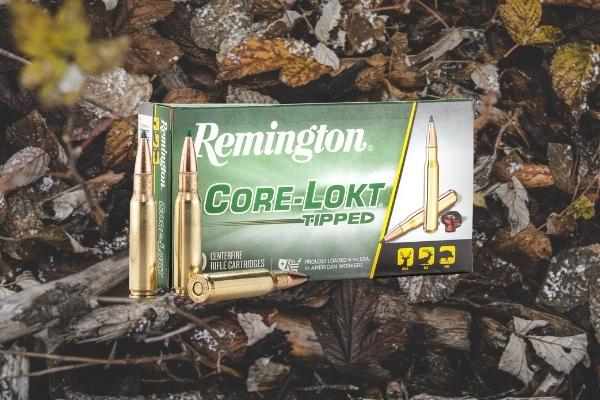
Did you know it can be a varmint cartridge, too?
Remington offers a 100 gr Core-Lokt load for the .270 Winchester. Norma beats this with their 96 gr EVOStrike lead-free ammo, which exceeds 3,500 feet per second.
These light bullets are great for animals smaller than deer, such as coyotes. Though, this would be more for population control than for fur harvesting because a 100 gr bullet traveling at 3,000+ fps will dump a massive amount of kinetic energy.
And, if you want to be a madman flinging out 85 gr bullets at 3,800 fps, Barnes has loose TSX bullets available.
They’re intended for the 6.8 SPC cartridge but .270 Winchester uses the same .277 bullet size. Speer TNT Varmint bullets are a saner choice for use on varmints.
On the other hand, both Berger and Nosler sell 170 gr bullets. That’s twice as heavy as the lightest .270 bullets.
So, a .270 Winchester can take down a coyote and, with a different load, can offer adequate effectiveness against large and aggressive bears.
About the only ammo selection the .270 lacks is a dedicated match ammo. This isn’t a design deficiency, but is because the .270 Winchester is entrenched in everybody’s minds as a dedicated hunting round.
However, the adventurous reloader can use Sierra MatchKing or Hornady Match bullets for the 6.8 SPC.
Availability
I’ve been to a small town on Prince of Wales Island in Alaska. The only way there was by boat or floatplane.
The outfitter shop had a limited selection of ammo. On its shelves was .270 Winchester ammunition.
Practically anywhere you want to hunt will have a store nearby with .270 Winchester ammo available for sale. And, since it’s not a round used in modern sporting rifles, it’s managed to elude much of the political pressure and hoarding issues that plague other popular calibers such as .308.
There is a knock against .270 Winchester, though, and that’s the price.
You’ll be hard-pressed to find cheap plinking ammo for your .270 rifle!
Related: What’s the Cheapest Rifle Caliber to Shoot? (Most Bangs for Your Bucks)
What Makes the .270 Winchester the Perfect All Around Hunting Caliber
.270 Win is such a great round because it managed to hit so many sweet spots of power, range, and versatility.
Part of this is because of circular reasoning. .270 is popular so manufacturers make high-quality ammo for it, so it becomes more popular.
However, the .270 is also so effective because of ballistics, the mathematics of projectile flight, and impact.
History of the .270 Winchester
When Winchester released their Model 54 bolt-action rifle in 1925, they also introduced the .270 Winchester cartridge.
It was a fairly successful rifle but the cartridge was overshadowed by existing hunting cartridges, especially the ubiquitous .30-06.
It took decades for hunters to realize that .270 was easier to use than .30-06 due to its flat shooting profile while being no less effective. In fact, with a modern bullet design, .270 can be more effective than its old competitor.
Today, the Model 54 is more or less a relic of history. Scopes weren’t commonly used when that rifle was designed so the bolt interferes with where a scope should go.
However, the .270 has gained worldwide acceptance as one of the greatest hunting calibers.
Let’s Dive into Ballistics
Bullets are effective because of physics. They transfer the kinetic energy into flesh, disrupting the tissue and organs and causing wounding and death.
A lot of advanced mathematics can be used to determine how effectively a bullet can transfer this energy. Bullet length, width, shape, and speed all have an effect.
The important factors for us laymen are sectional density, ballistic coefficient, velocity, and energy.
What makes .270 such a good cartridge is how it makes good marks in all of these factors.
Sectional Density
Without penetration, a hunting bullet is worthless.
Sectional density is a measurement that helps hunters understand how well a bullet penetrates a target.
If two bullets with the same velocity, shape, and construction but different SDs hit the same target, the higher SD bullet will penetrate farther.
To determine a bullet’s SD, take its weight in pounds, divide it by its diameter in inches, and square the result.
You want an SD of .205 or higher for deer and .250 or higher for elk. .270 Winchester’s sectional density averages between .242 and .279.
Ballistic Coefficient
Another important consideration is how well the bullet flies through the air, measured as the bullet’s ballistic coefficient. The higher the BC, the lower the bullet’s drag, the better it retains velocity, and the longer the range.
BC is a ratio based on the bullet’s SD and its shape. The flatter the nose, the worse the BC; the heavier the bullet, the better the BC. Higher is better.
Let’s compare Hornady’s 150 gr SST bullets, .277 caliber for the .270 Win and .308 caliber for the .30-06 Springfield.
The .308 bullet’s BC is .415 and the .277 bullet’s BC is .525.
That’s quite the advantage, even with the same bullet weight.
Oh, and the sectional densities for those two projectiles?
.279 for the .277 bullet and .226 for the .308 bullet.
Velocity and Energy
Naturally, to impart energy, the bullet has to have energy.
.270 Win doesn’t lack here. The average load puts out around 2,700 ft-lbs of force, whether it’s a 150 gr bullet going 2,850 fps or 130 gr bullet going 3,060 fps.
.30-06 just barely beats out .270 Winchester here. It gains about 60 fps and 100 ft-lbs with a 150 gr bullet.
However, that advantage won’t last long because of the .270’s superior SD and BC!
Other Great Hunting Calibers
While I hope I’ve laid out some good arguments for why .270 Win is the perfect go-to hunting caliber, I know I haven’t convinced all of you.
And that’s okay.
I believe that everybody should be knowledgeable about their specific circumstances and use the best tool for the job.
.270 Winchester may be extremely effective and versatile for many people but it won’t be the best choice for everyone.
I tend toward specialization, but that’s because I’m also a firearm collector. Some people like to minimize the variety of calibers they have to juggle. I have three different caliber barrels for one of my pistols and four other caliber uppers for my AR-15.
So, I’ll grab my 6.5 Grendel AR-15 for deer hunting and a .45-70 lever-action rifle for black bears rather than a single rifle for both.
Other people may want to pass on picking up a .270 Winchester rifle even if they’re looking for a one-gun solution.
For example, if you’ll never travel up north to the land of moose and brown bear, then the maximum-power capabilities of the .270 may be a waste. You can be just as effective with a less powerful choice.
So, let’s look at some of my favorite alternatives to the .270.
All of these will be great all-around hunting rounds. Just not as versatile as .270 Winchester.
The 6.5 Cartridge of Your Choice
6.5mm rifles exploded in popularity once the 6.5 Creedmoor caught on, but 6.5 has been a go-to round for hunters for over a hundred years.
In Europe, 6.5x55mm Swedish is one of the most popular hunting cartridges. It’s less popular in America but still available on many shelves.
6.5 Creedmoor was designed as a long-range target round but is also a celebrated hunting round. It’s based on the .308 case to be used in short-action rifles.
My favorite 6.5mm caliber round is the .260 Remington, specifically the .260 Rem Ackley Improved. It’s just a tad more efficient than 6.5 Creedmoor, though not as well supported commercially.
These 6.5mm cartridges have similar capabilities and are just a bit less powerful than the .270 Winchester. You lose out on the ability to harvest grizzlies and moose but perhaps gain superior extreme-range capability.
Special mention to the 6.5 Grendel here because it’s the closest you can get to an all-purpose hunting cartridge in an AR-15.
However, Grendel’s case is much shorter than any other cartridge I’m mentioning here. This cuts down its capability to hunt black bears and smaller animals, so it’s not a true all-around hunting caliber.
7mm Remington Magnum
This round can be considered to be the .270 Winchester on steroids.
It’s bigger in every respect while maintaining similar velocities and ballistic coefficients.
This cuts off the low end of harvestable animals, so please don’t take a 7mm Rem Mag coyote hunting. There may not be any fur left.
However, you’ll get enough extra power for more confidence against the biggest mammals while staying tame enough for whitetail and blacktail deer.
.30-06 Springfield
The parent cartridge to the .270 Winchester is itself a good hunting round.
You can use .30-06 to harvest many medium and large game animals. Sabot loads are available for varmint hunting, and bullet weight can reach 220 gr for the heaviest animals.
The main problem with .30-06 is that it’s not as efficient of a round.
You need to load a heavier bullet to match the sectional density and ballistic coefficient of a .270 bullet, which will cost you muzzle velocity. This cuts your effective range short and loses you the advantage of .270’s generous maximum point-blank range.
Overall, .30-06 Springfield is a good choice for hunting almost any animal.
I just prefer my hunting ammo to be more efficient.
.308 Winchester
A bit shorter than .30-06, .308 is practically as effective as the longer cartridge for most use cases.
But it suffers the same ballistic problems as .30-06 because of its larger caliber, without the advantage of the heavy 220 gr bullets.
On the other hand, .308 Win fits in short-action rifles and cheap surplus ammo is available. You can put more practice .308 downrange than any other all-purpose hunting caliber, translating to better shot placement in the field.
Related: Best .308 Rifles Reviewed
In fact, I sometimes recommend .308 as the perfect full-power general-purpose caliber.
But if hunting is the only thing on your mind, I’d still recommend .270 Winchester.
Conclusion
No one caliber can ethically harvest every huntable animal in North America.
However, if you’re willing to leave off small game such as foxes and rabbits, the .270 Winchester gets you darn close.
It’s a powerful caliber that maintains its kinetic energy at long ranges. With the right bullet selection, you can use it to take down a large bear or a small deer.
If you want to choose one hunting rifle while maximizing the variety of game species you can hunt, I recommend buying a rifle chambered in .270 Winchester.
Recommended reading:

